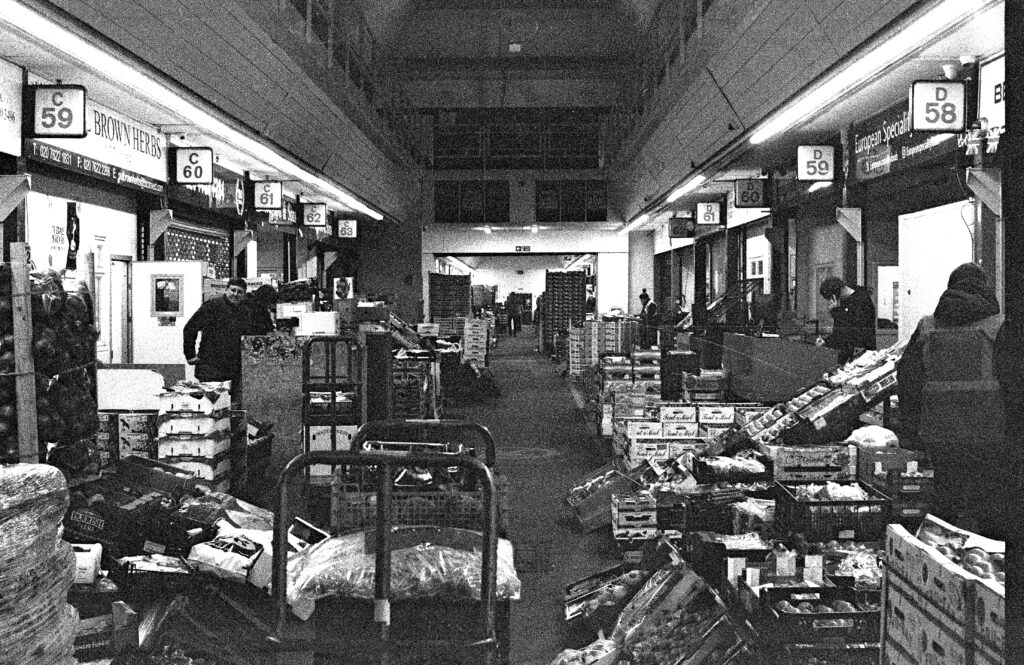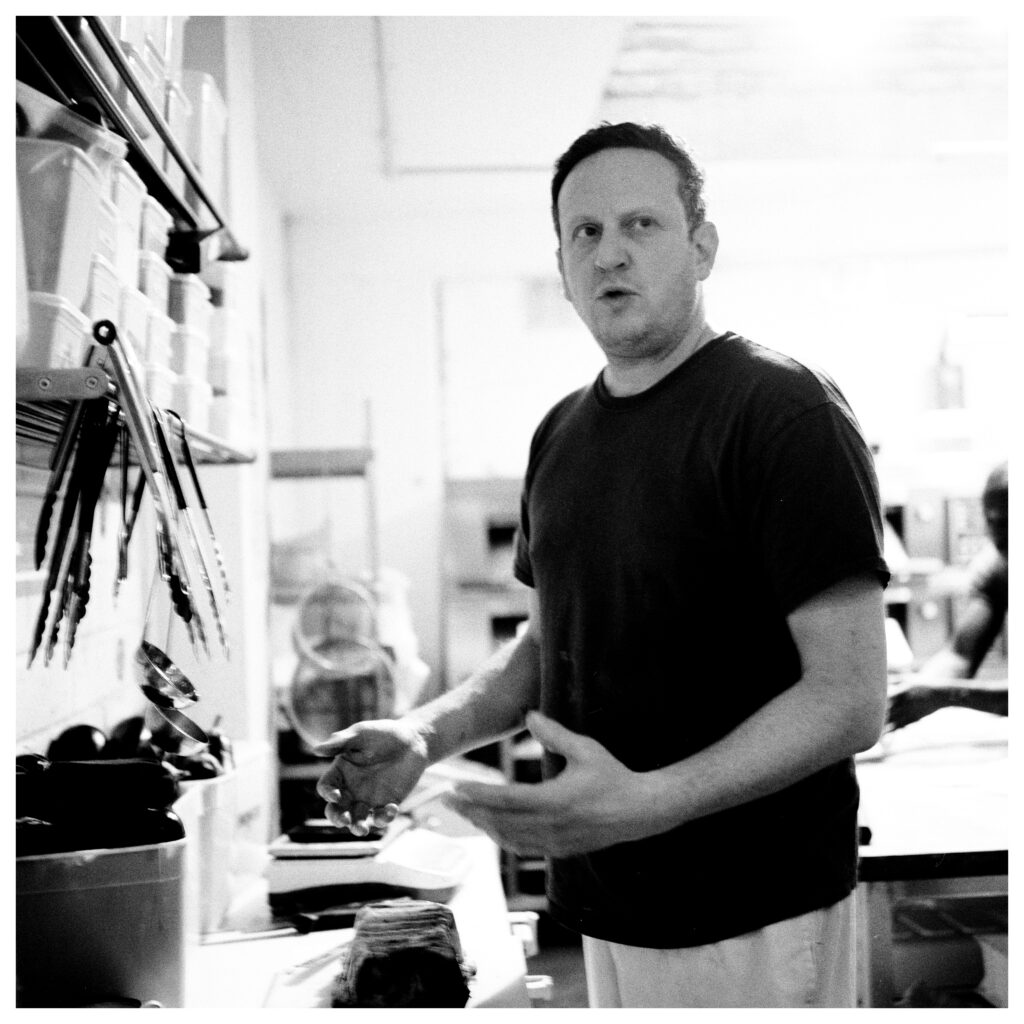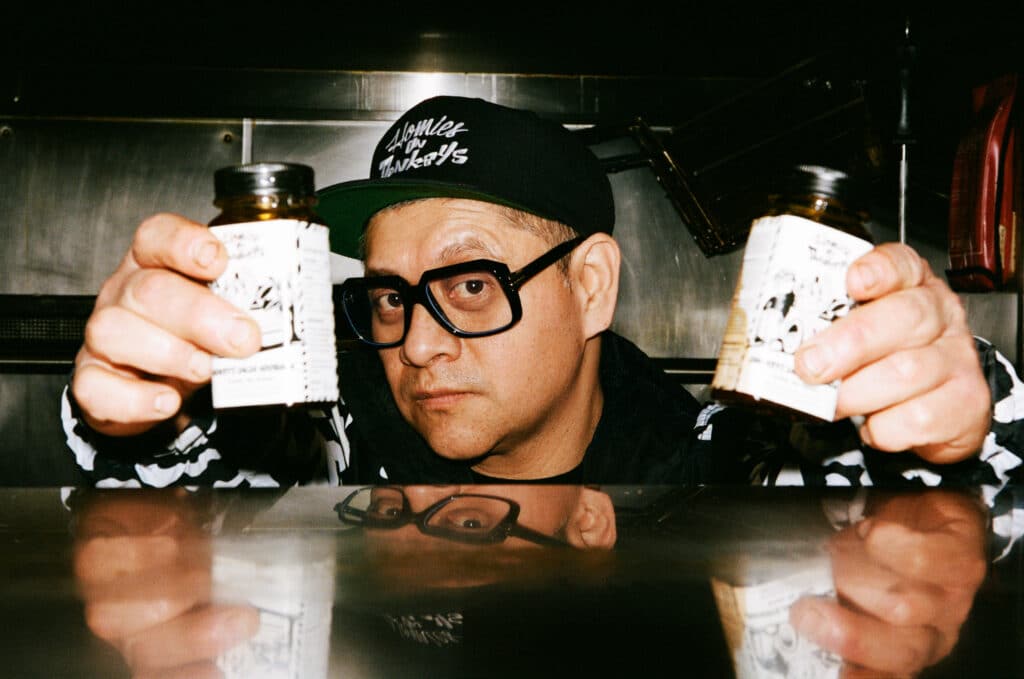A Love Letter to the Market:
February 12th 2025
5 PM
On the Northern Line, I weave against the tide of suits spilling out into the suburbs, their day ending as mine begins. At Nine Elms station, the streets are quiet. I cut left down Pascal Street, passing well-groomed professionals heading home and masked youths gliding by on e-bikes. Rounding the corner, the All Greens warehouse emerges from the maze of concrete. Its terracotta signage glows beneath the floodlights. From outside there’s no sign of life. Upstairs, the office is dark. Only a single fluorescent light hums above Aziz as he clacks away at his keyboard. Between entering purchase orders, his fingers moving like a blur, we talk about family, food, travel plans, and the future.
He dreams of moving to Qatar—maybe in a few years. Until then, All Greens is home. He’s excited about the photographer visiting tonight. He tells me he likes to photograph landscapes in his spare time. He says he’d stay to watch, to see what tricks he could learn, but his mother’s cooking beckons him home.
“I want to learn to cook,” he confesses, to my surprise. I imagine him in the kitchen watching his mother, making mental notes. Trying to understand the composition of the dishes he’s eaten all his life but never cooked himself.
“She won’t let me in the kitchen,” he chuckles. He’s surrounded by food both at work and at home, yet the mechanics of its making remain a mystery for him.
At my desk, I nurse a cup of tea and observe the shift from evening to night. The office comes alive at the stroke of eleven. Aziz leaves, and Tofik takes his place.
Tofik’s grin is pure mischief—like a child caught red-handed, or someone with a juicy secret. But he also takes immense pride in his work.
“We increased sales 18% on dry store this month,” he boasts, as we scan the shelves filled with a new line of infused oils. “Every day, chefs ask for something new. Some things I’ve never heard of before. But I find them, I learn quickly.”
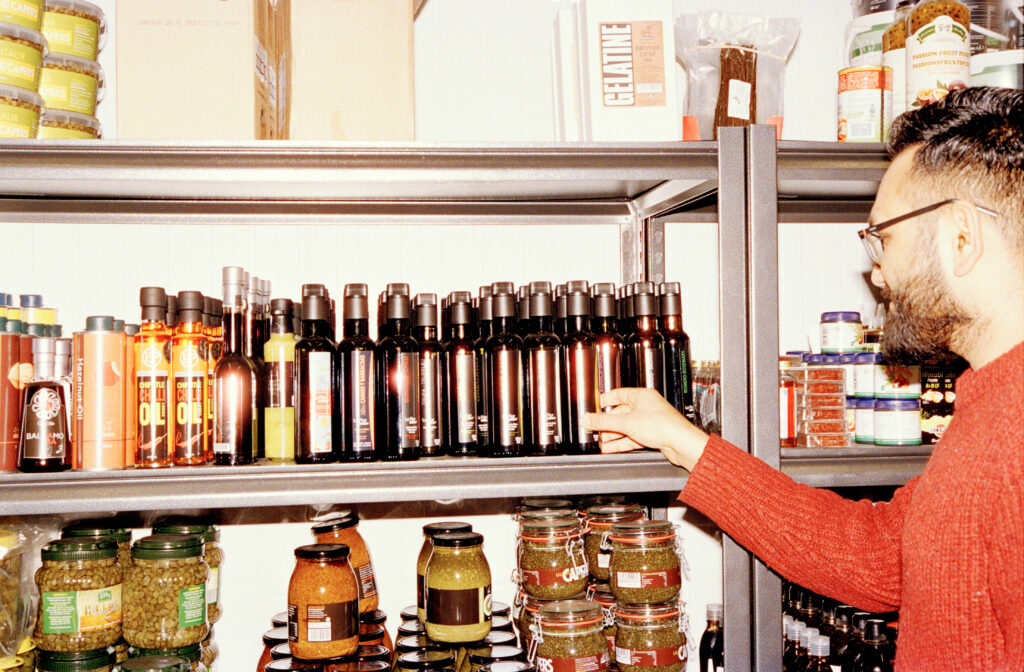
A call comes in from a chef across the city. He gives his order to Tofik. Then, I hear his voice on the phone—distant but agitated. He’s not happy with the price of Koffman chips.
“Sometimes the chefs need to vent,” Tofik says with a shrug as he hangs up.
In a way I envy him. While I chase chefs across London trying to build relationships, he only has to sit here each night and listen. Order processor and therapist rolled into one. It’s a kind of closeness that feels elusive to me.
Dawid, calmly and methodically, collects the first batch of packing sheets from the printer. He has a precise, almost meditative approach—like a monk. His presence brings serenity. James, on the other hand, is a whirlwind. Never still, always moving. A call here, a hastily scribbled list there, vanishing through a side door like a magician. Zurab, broad-shouldered and deliberate, sits dialing through a list of suppliers. His unmistakable baritone booming through the hum of the office: “Four boxes of forced rhubarb, but make it nice. The rhubarb has to be top, top quality. Ten boxes of castelfranco…” And on he goes.
Soon, he’ll be clambering into a van headed to Western Market near Southall. On the hunt for stock to meet the endless stream of demands flowing in from restaurants across the city.
12 AM
Tristan, the photographer, arrives. He drinks his coffee black, no sugar—no time for frills. He sets his camera bag down and pulls out a collection of vintage Canons, his pockets full of film.
Downstairs, the hush has shattered: trolleys rattle, voices rise, forklifts whir. Packers blur past us, hauling teetering stacks of boxes. Tristan melts into the shadows of the warehouse, capturing the motion in the sharp bursts of his flash. I see a crate pass, inside a shock of colour.
“Rainbow chard,” I say. “Bang in season now.”
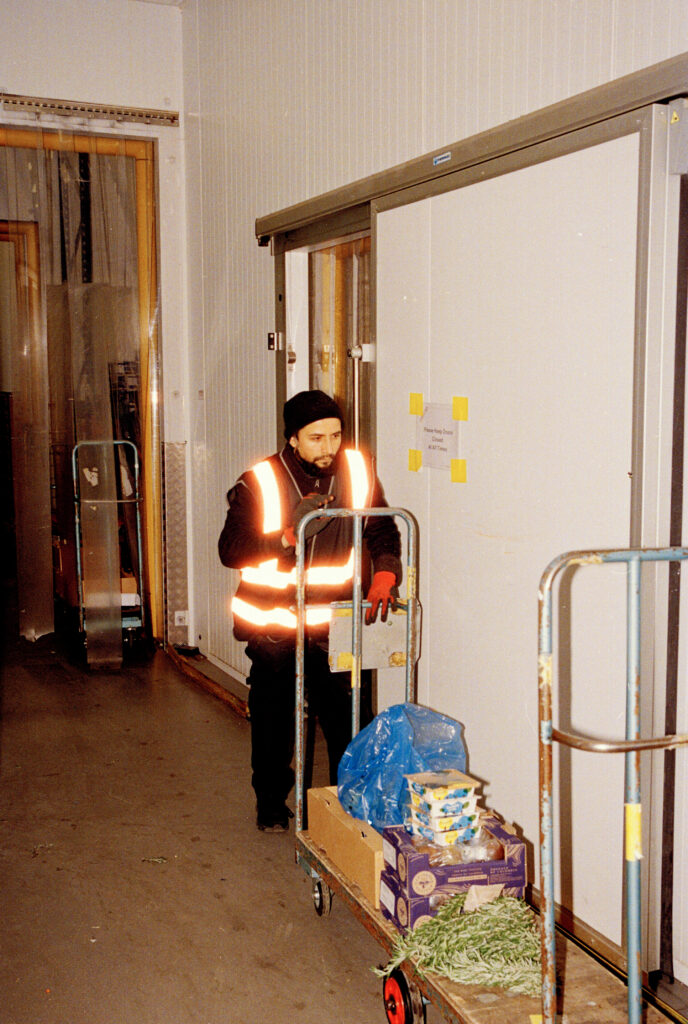
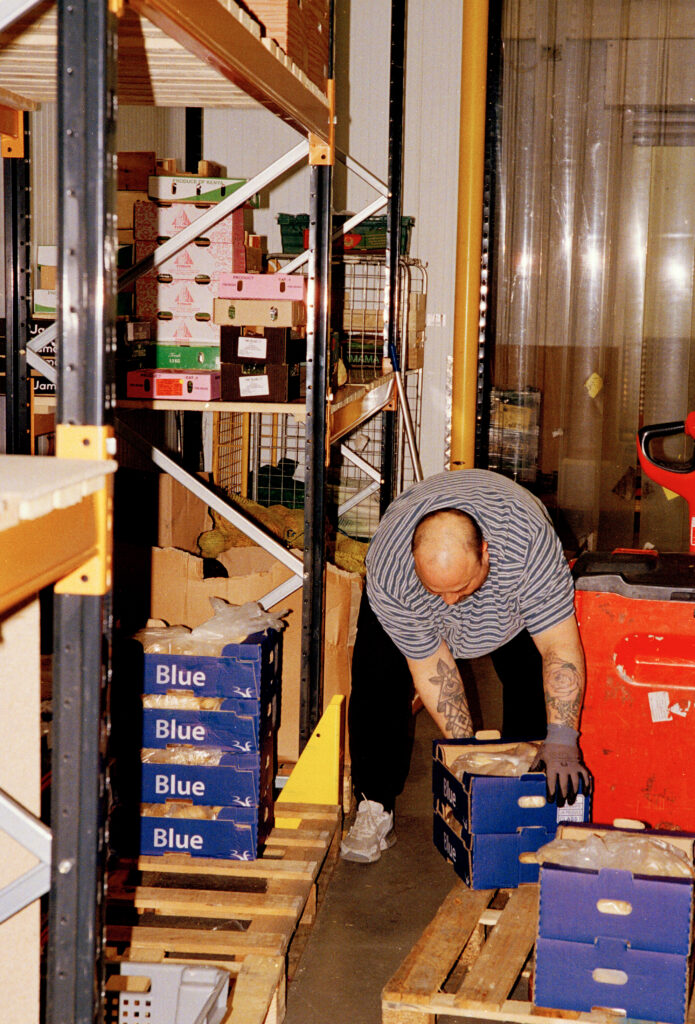
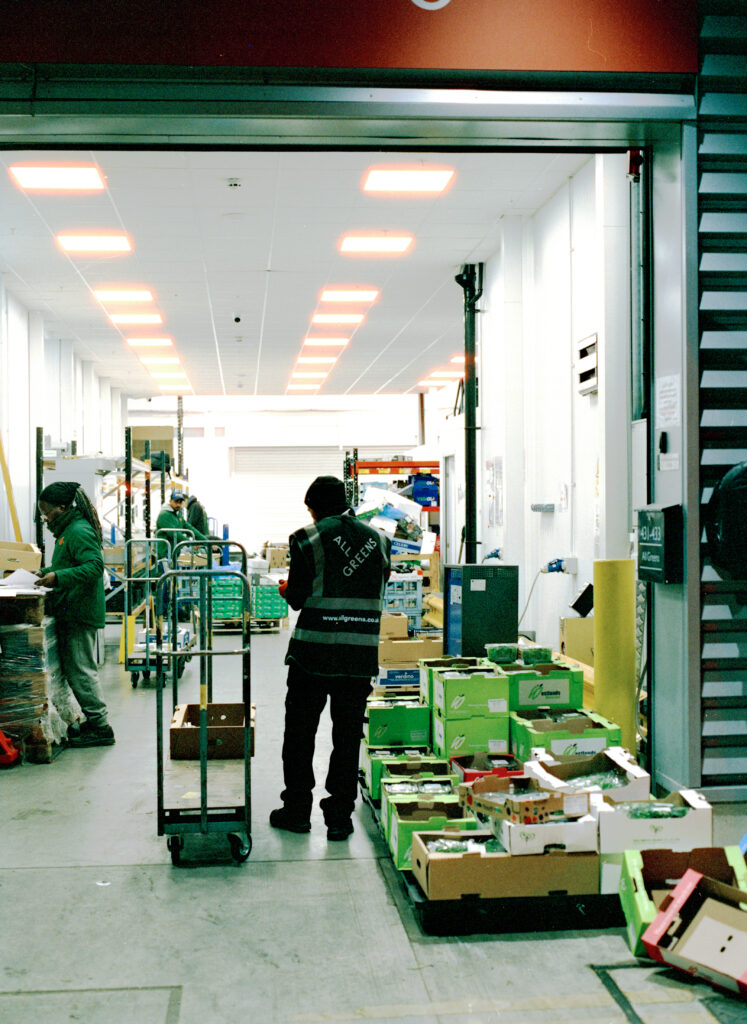
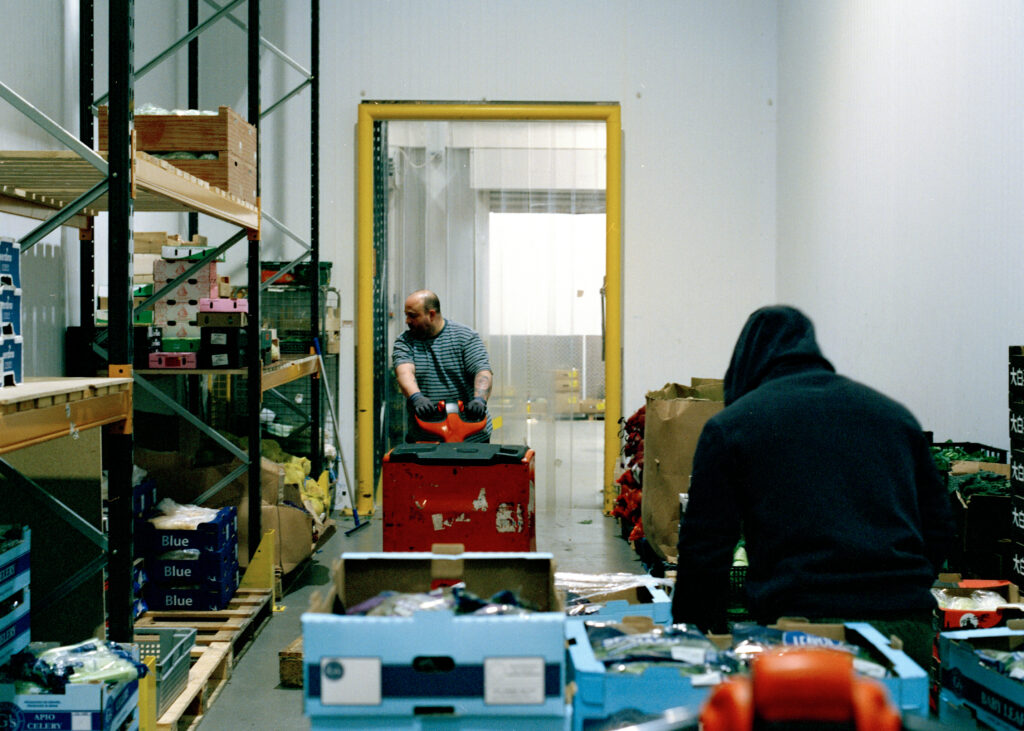

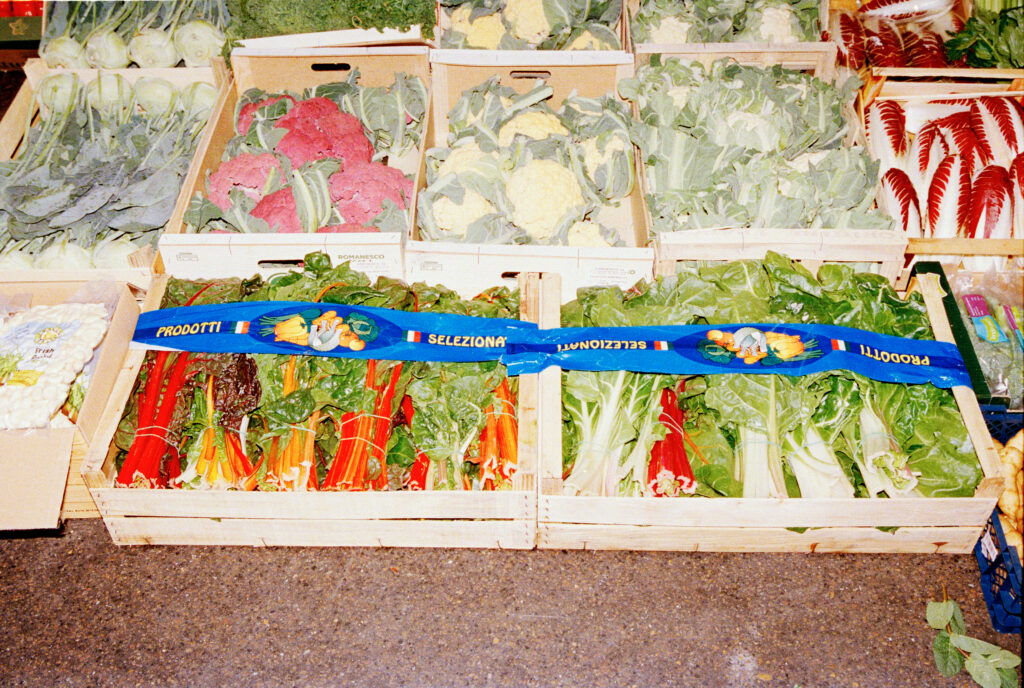
We follow James across the market to Supreme Salads, one of our trusted suppliers. As we walk, I give Tristan the basics:
“Brokers consolidate produce here in bulk. See all those lorries?” I point to a row of trucks. A parade of forklifts performs a ballet around them, the creak of shifting suspension and the clatter of wooden pallets echo through the market. “They bring in lorry loads of produce from across the UK and Europe. This is then sold by the pallet to wholesalers here in the market. The wholesalers break it down and sell smaller quantities to distributors. The distributors break it down even smaller to supply restaurants. All Greens are a hybrid—both wholesaler and distributor.”
Tristan nods, snapping photos between my words. I pull him back just in time to avoid a forklift whipping past and wonder just how much he understood—how much do I understand of this labyrinthine market? On the buyers’ walk, James and I stop and chat with some of the traders lingering in front of their stalls. They think we’re from BBC Food or The Guardian. I tell a woman at a desk beside a stack of leafy clementines that we’re scouting the market for the best of the season for Tristan’s lens to devour.
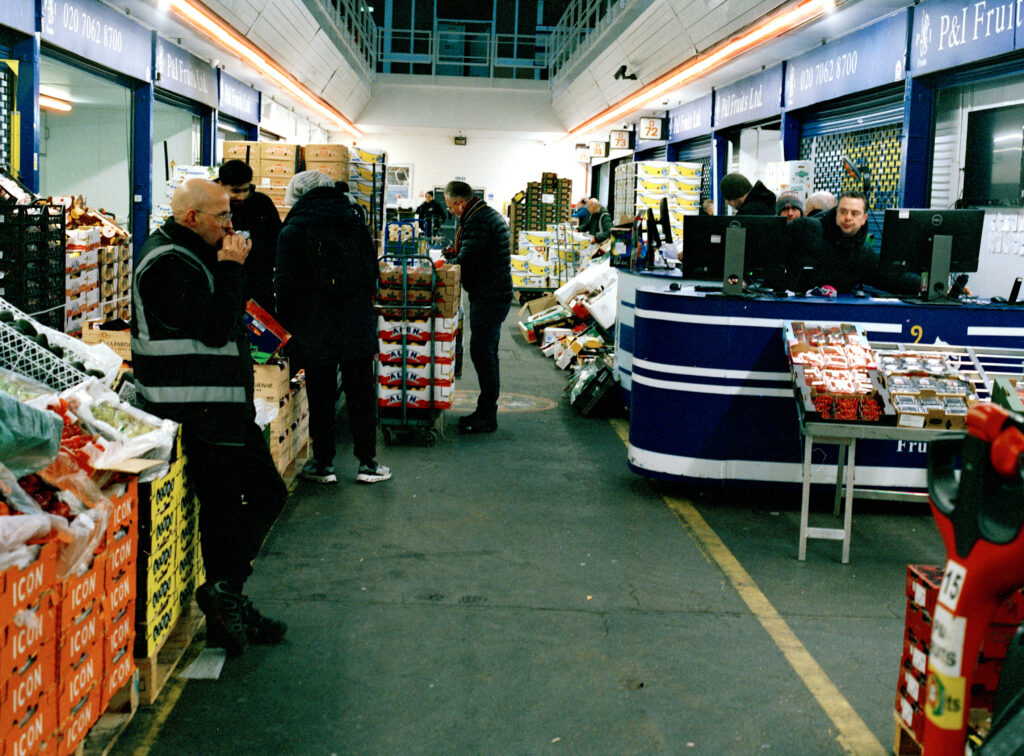
There are surprises along the way—unexpected English asparagus from the Wye Valley in late February. Gariguette strawberries that stir childhood memories of France for Tristan. The first large watermelons of the year catch my eye.
“That must mean summer’s just around the corner,” I say with a grin, lifting one of the watermelons to feel its heft. As we step out of the buyer’s walk I fasten my coat collar around my neck to shield it from the biting chill.
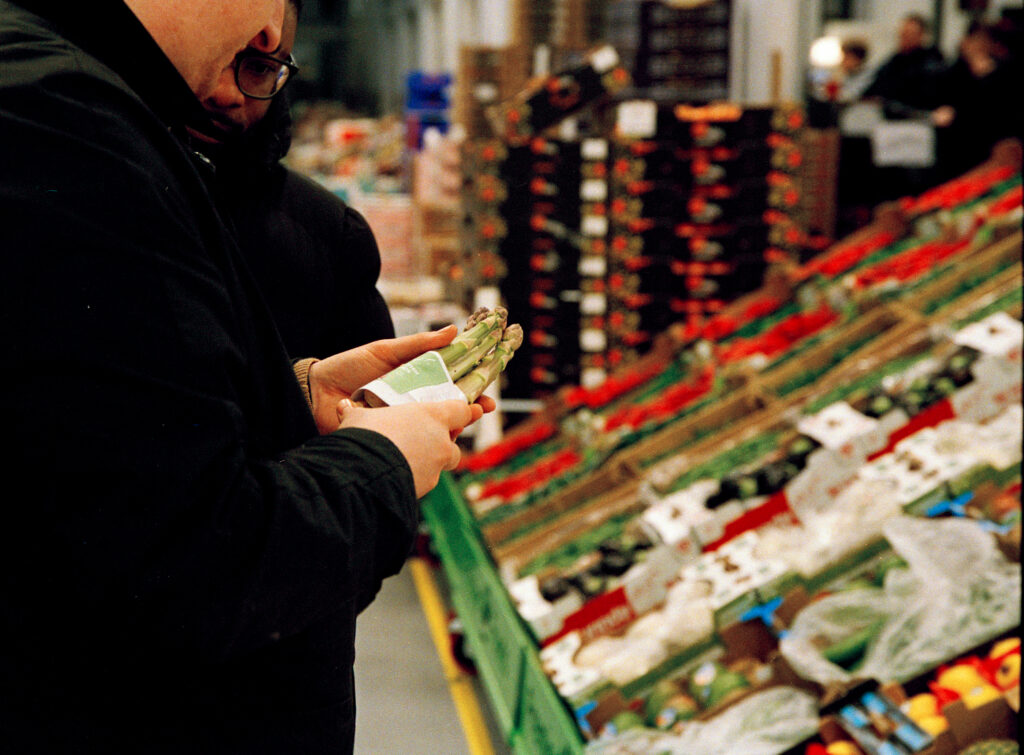
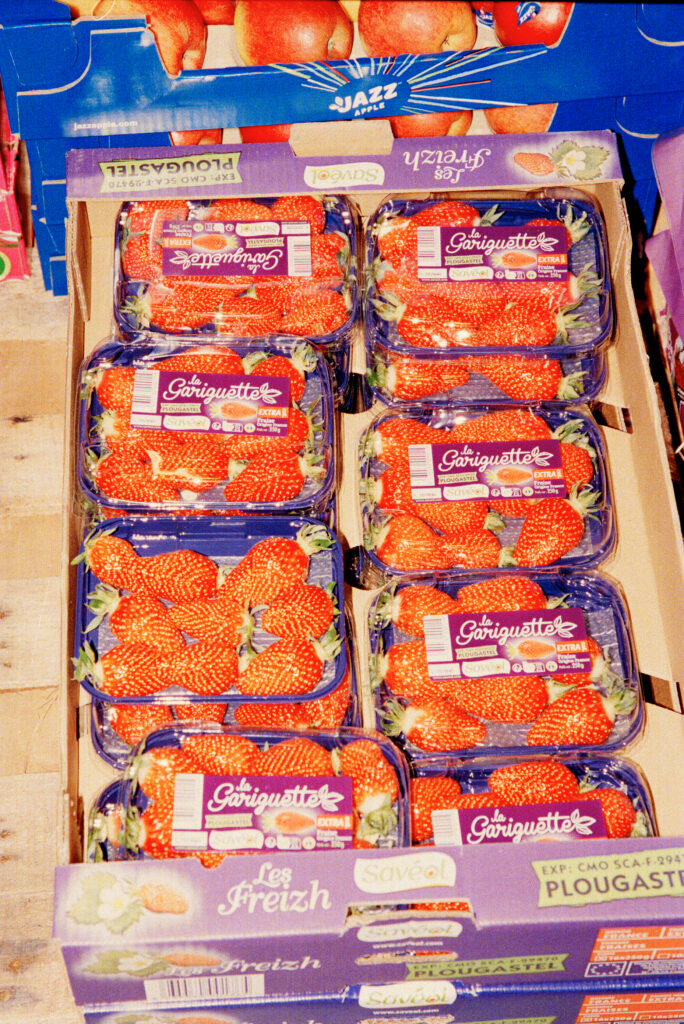
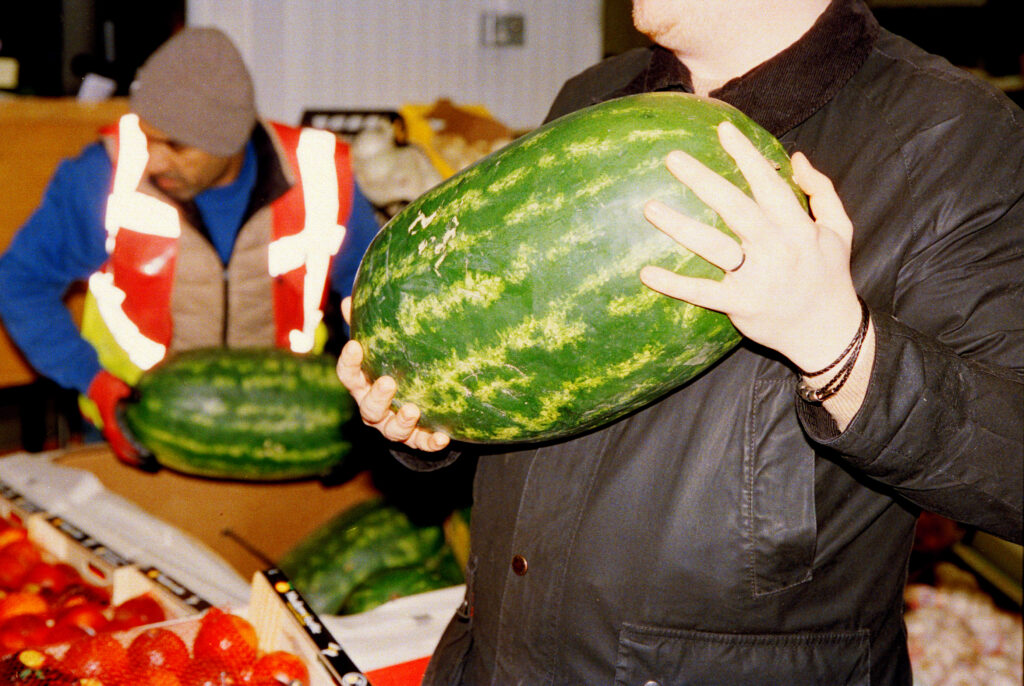
Back at our warehouse, a murmur spreads. James comes running over, his eyes alight.
“The Italian shipment’s just arrived,” he tells us—the moment we’ve been waiting for. “Get the camera ready.”
Tristan and I scramble over as Dawid and Adam tear away the plastic wrap that secures the pallet. A trove of treasures from the Med spills out: gorgeous heads of Treviso radicchio, their points arranged neatly in their boxes; crimson blood oranges grown in the volcanic soil of Sicily; leafy lemons which permeate the air with their citrusy scent; bundles of artichokes; and more.
The team moves like a well-oiled machine, sorting and assembling orders onto pallets scattered across the yard. Another van pulls in while they work, overflowing with Turkish peppers.
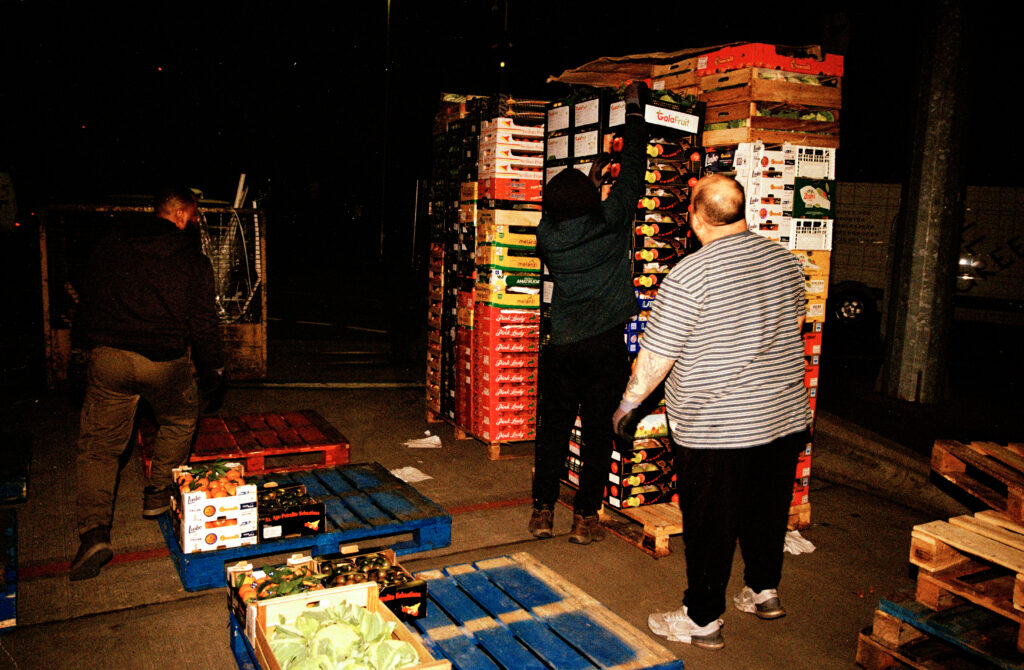
Adam pulls me aside, taking a breather. His face is weathered but lively.
“I was a restaurant buyer in a past life,” he tells me as we watch the drivers load their vans. He likes to tease and banter with them—a game of cat and mouse, and Adam is Dennis the Menace.
“I’ve worked with all the greats,” he says.
Intrigued, I want to buy him a beer, let his stories unravel. But the work never stops. Conversations here are brief—snatched between the rhythms of labour. A few words exchanged while shifting a box, a story half-told before moving on to the next task.
Adam is already turning away, pallet truck in hand. “Chefs are a different breed,” he calls over his shoulder. “They want the best, and they want it yesterday.”
I laugh because it’s true.
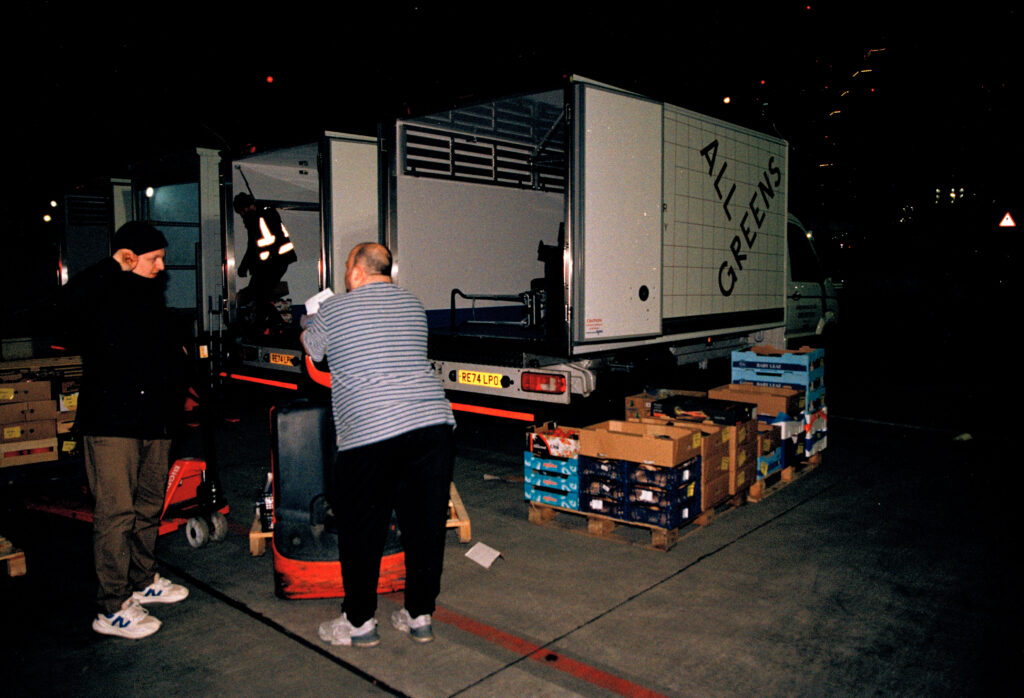
Just a few days earlier, Chef Jake Norman from Ottolenghi had rung me up:
“Any chance you can get me some pink rosa radicchio?” he asked.
It wasn’t on our pre-order list, but I managed to squeeze a box onto the shipment before it left Milan.
Now, as the pallet is broken down, Dawid comes sprinting up to me.
“How many pieces do they need?” he asks.
“Three heads each for Islington and Hampstead.” No hesitation, I remember clearly. Dawid nods and disappears between the rows of crates carrying a white styrofoam box with the most beautiful curls of pink and purple leaves peeking out.
It occurred to me that across the Thames, later that day, a dish on Ottolenghi’s menu will be built around this moment.
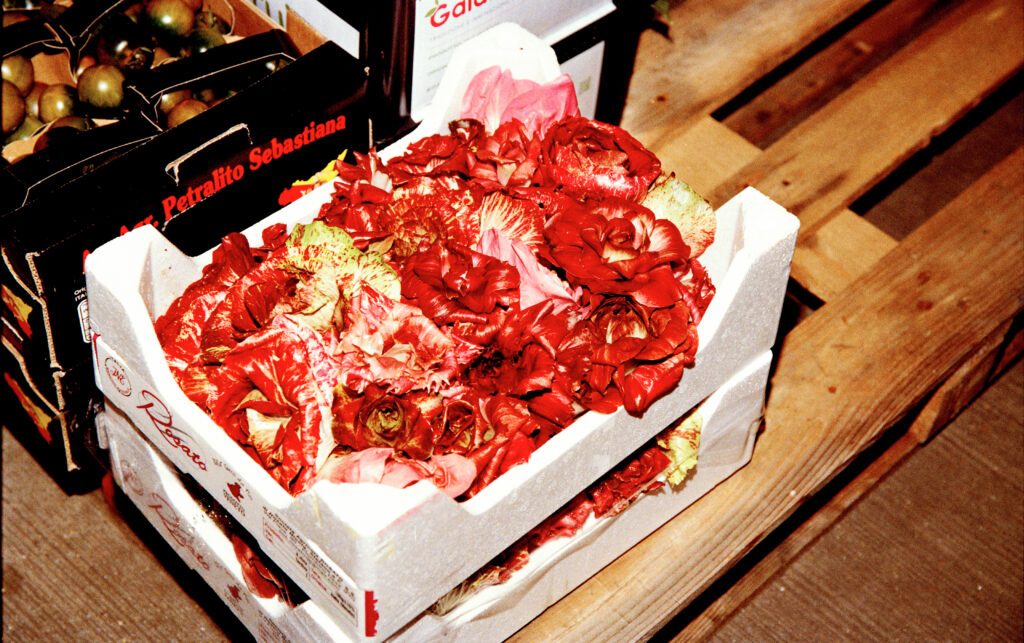
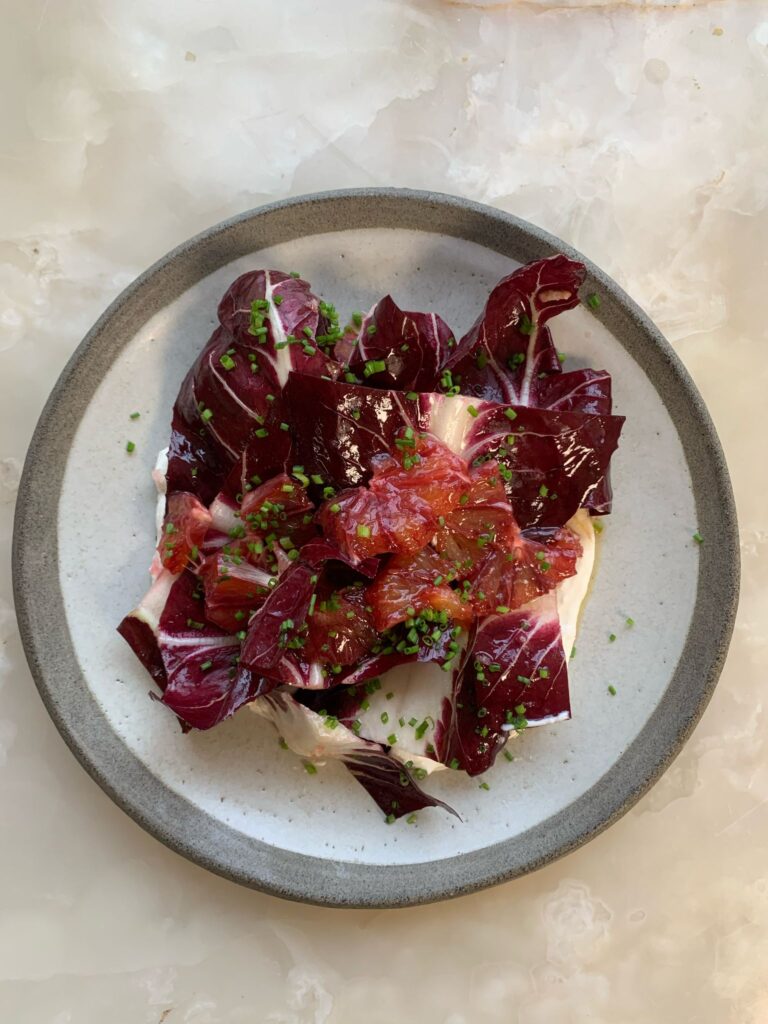
It’s work that mostly goes unseen, even to those of us in the thick of it. I think of the quiet artistry of the chefs working their alchemy in back kitchens, and wonder if the diners at Ottolenghi will pause to ponder the farmer in Italy, watching his radicchio crop nervously throughout the autumn rain; Luigi in Milan, who slipped this last-minute request onto the pallet; Chef Jake, the creative spark behind the dish; the steady hands of the line cook who assembled it; the market porters who ferry crates from lorry to loading bay in the dead of night; Adam, dismantling pallets in the cold, his hands numb; Dawid, setting the radicchio down carefully in the box destined for Ottolenghi’s kitchen as gently as a parent puts their child to bed.
These are the hundreds of unseen hands that feed the city in the dark.
Maybe, as the diners glance at the morsel of salad at the end of their forks, they might stop to contemplate the magnitude of the supply chain that brought it there.

3 AM
Tristan and I finish up at the market café—the best cup of tea in London. The faces around us are tired. Tristan’s cameras draw a few curious glances, but no one questions our presence. The market welcomes all who are open to its rhythms.
We sit with our tea, talking about the night, the market, the city. Where we come from. Where we’re going. The strangeness of belonging and not belonging. I fall into talking too much, as I often do.
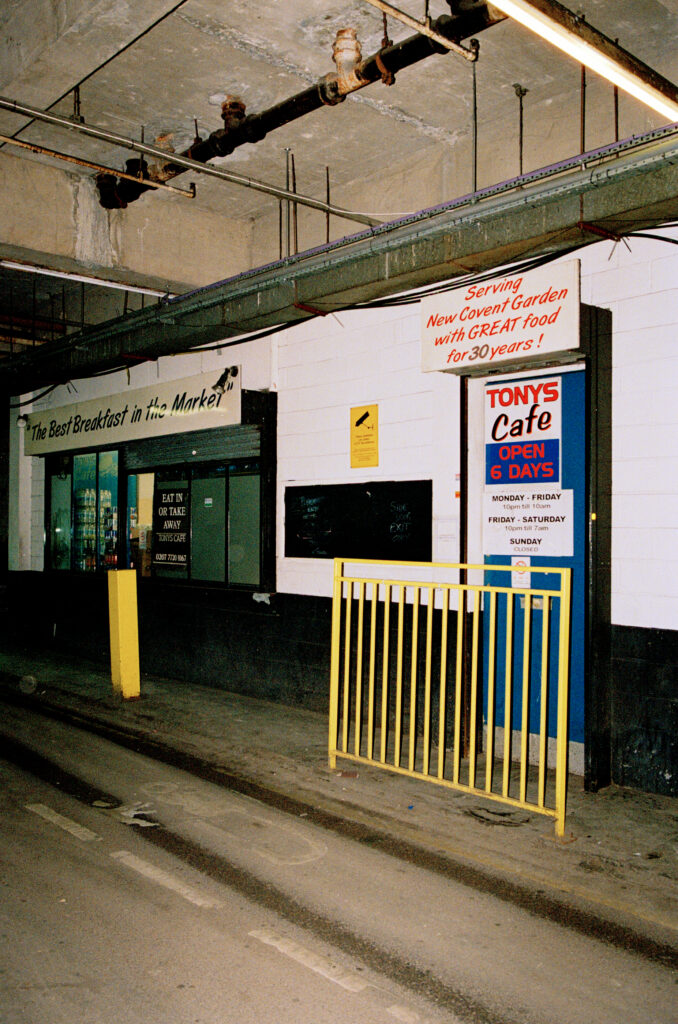
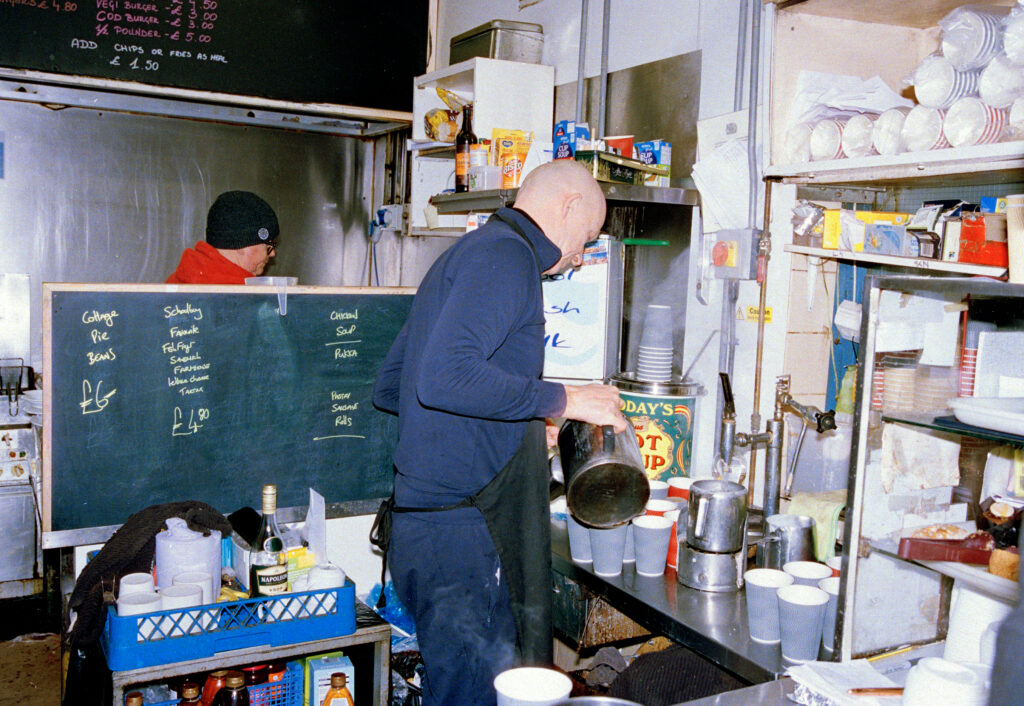
He has to catch a taxi back East, so we head towards Nine Elms Station. We pause to take in the Vauxhall skyline—its collection of jutting skyscrapers appearing haphazardly arranged, looming like a silent monolith watching over the market.
We walk down Pascal Street and step out onto Wandsworth Road. The city around us is still. We feel like the only living souls in all of London. I glance back down Pascal Street and muse aloud that from here, you’d never know the world that lies just a short walk away—the rattle of trolleys, the whirr of forklifts, the rumble of lorries—all dissipated, like waking from a dream.
The heartbeat of the city hidden in the dark, keeping London’s kitchens alive while it sleeps.
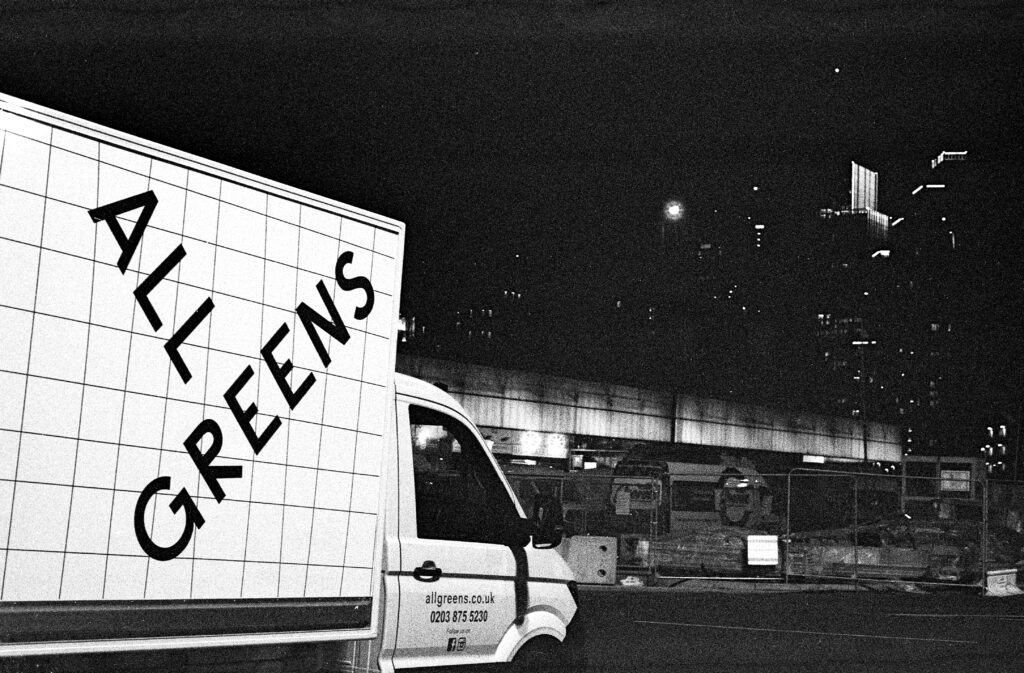
Photos by Tristan Benhamou
